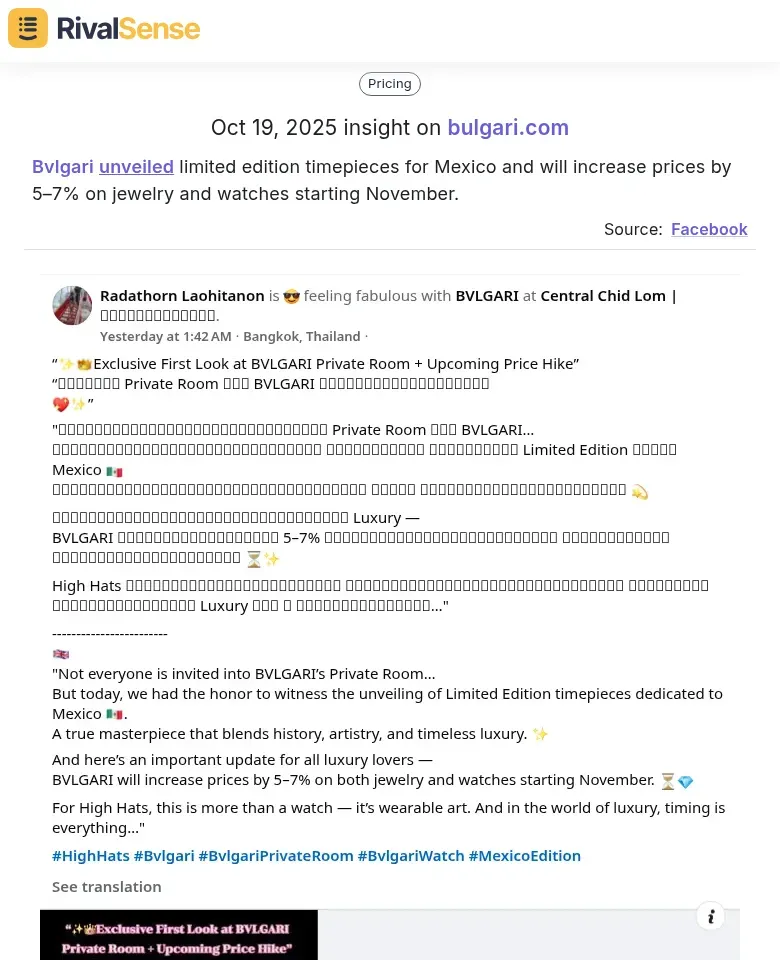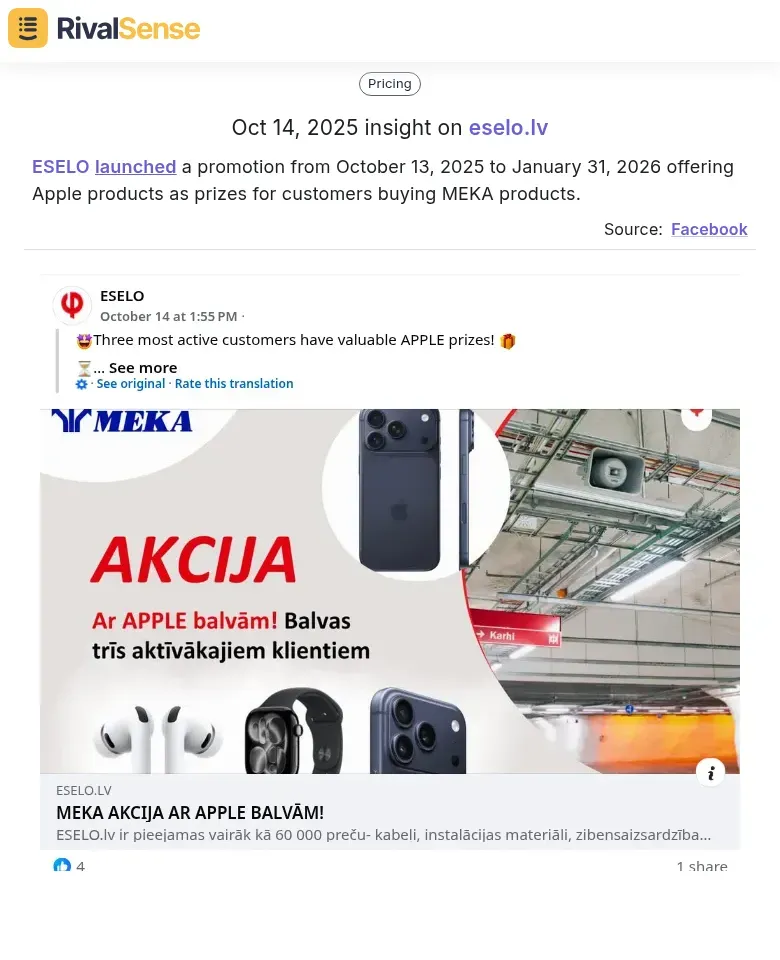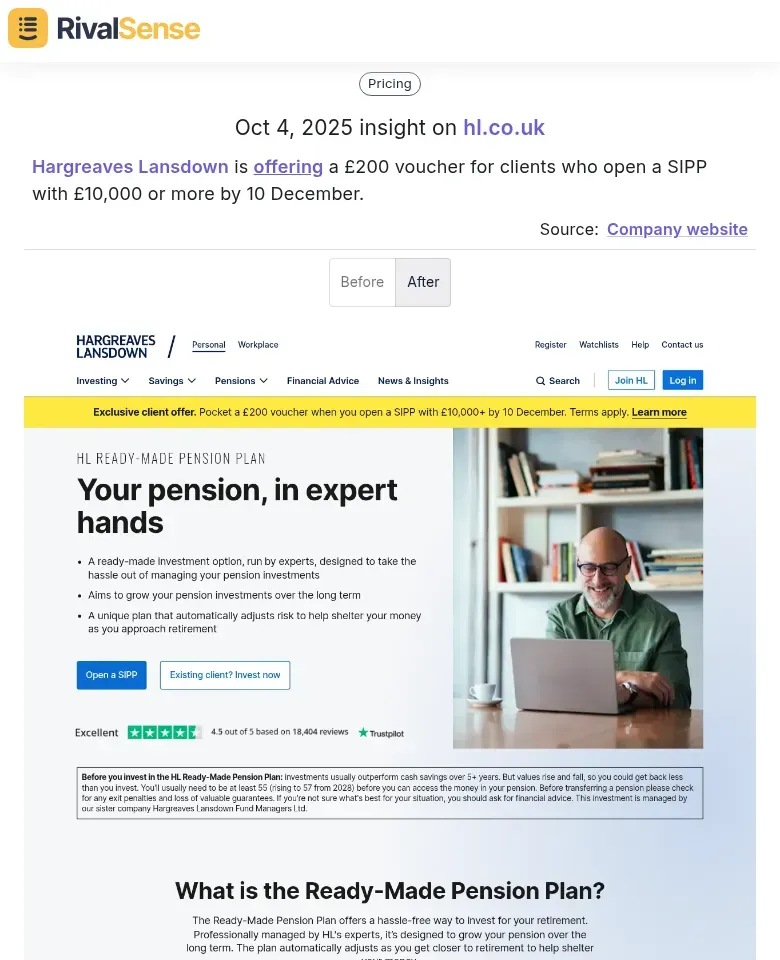Avoid These 4 Pricing Mistakes When Tracking Competitor Insights
In today's hyper-competitive B2B landscape, pricing mistakes fueled by flawed competitor tracking can devastate profitability and market position. When businesses reactively match prices without understanding the full context—such as competitor feature sets, customer segments, or value propositions—they risk eroding margins and commoditizing their offerings. Real-time competitor insights are crucial; they prevent knee-jerk reactions by providing a holistic view of market dynamics, enabling proactive strategy adjustments. For instance, if a rival lowers prices, real-time data might reveal they're targeting a different customer tier or facing churn, allowing you to hold your ground strategically. Avoid blind price matching—instead, use competitor intelligence to inform value-based pricing that highlights your unique differentiators.
Practical tip: Implement a weekly pricing audit checklist:
- ✅ Review competitor price changes and correlate with their product updates
- ✅ Analyze customer feedback on competitor pricing
- ✅ Assess your value drivers versus competitors
This approach ensures pricing decisions are data-driven, not impulsive, safeguarding your bottom line and strengthening your market stance.
Mistake 1: Failing to Understand Strategic Price Positioning
When tracking competitor pricing, many businesses miss the strategic signals behind price changes. A competitor's price increase often signals market positioning shifts—like luxury brand premiumization—not just cost pressures. For example, if a SaaS competitor raises prices 20% while maintaining features, they're likely targeting premium segments. Don't mistake temporary promotions for permanent strategy shifts; track pricing over 3-6 months to identify trends. Use competitor pricing to validate your own value proposition: if competitors charge premium prices for features you offer, you may be underpricing.
Practical steps to avoid this mistake:
- 📊 Monitor competitor price changes monthly
- 🔍 Analyze feature-price correlations
- ⚖️ Compare your pricing tiers to theirs
- 🗣️ Survey customer perceptions of value vs. price
This helps avoid reactive pricing and reinforces your strategic positioning.
Mistake 2: Overlooking Promotional Strategy Context
When tracking competitor pricing, don't just record promotional discounts—analyze their strategic context. Competitors use promotions for specific goals: customer acquisition, retention, or market share growth. Overlooking this context leads to misguided pricing decisions. For instance, a 50% off sale might seem alarming, but if it's a short-term acquisition push, it's less threatening than a permanent price drop.
Practical steps to avoid this mistake:
- 🎯 Identify the promotion's purpose: Check if it targets new sign-ups, existing customers, or broad audiences
- 📅 Evaluate duration and timing: Short-term promotions (under 30 days) often aim for quick wins, while longer ones may signal sustained strategy
- 📝 Use a checklist: Document the promotion's goal, target audience, duration, and historical frequency
This helps differentiate between one-off tactics and strategic shifts, enabling smarter pricing responses.
Mistake 3: Ignoring Customer Incentive Structures
Ignoring customer incentive structures is a critical pricing mistake in competitor analysis. Competitors use financial incentives strategically to drive specific customer behaviors—like early renewals, bulk purchases, or feature adoption. For example, a SaaS company might offer a 20% discount for annual commitments to improve cash flow and reduce churn.
Practical steps to avoid this mistake:
- 💰 Analyze competitor offers for minimum thresholds and qualification criteria
- 🗓️ Map incentive timing to identify patterns, such as Q4 discounts to hit revenue goals
- 🛠️ Use tools to track these structures and align your promotional calendar
This ensures you're not blindsided by competitor moves and can craft incentives that resonate with your audience.
Mistake 4: Missing Market Timing and Seasonal Patterns
Market timing is everything in competitive pricing. Many businesses track competitor prices but miss the crucial patterns around seasonal peaks, holidays, and industry events. For example, SaaS companies often launch aggressive promotions during Q4 to capture budget flush, while e-commerce competitors strategically drop prices before Black Friday. Missing these windows means competing when the market is already saturated.
Practical steps to avoid this mistake:
- 📆 Create a competitor pricing calendar tracking major holidays, industry events, and fiscal quarter ends
- 🔔 Monitor competitor promotion frequency—are they running 2-week sprints or month-long campaigns?
- 📊 Analyze historical data: when did competitors raise prices after a promotion?
- ⏰ Set alerts for competitor price changes 2-3 weeks before key seasonal periods
- 🎯 Use competitor timing insights to plan your strategic counter-promotions during their quiet periods
Remember: The goal isn't just to match competitor pricing, but to outmaneuver their timing.
Leveraging Real-World Competitor Insights
Integrating real-world examples into your strategy can transform how you respond to competitor moves. Here are insights from RivalSense that highlight the value of comprehensive tracking:
-
Bvlgari Price Increase and Product Launch:

Bvlgari unveiled limited edition timepieces for Mexico and will increase prices by 5–7% on jewelry and watches starting November. This type of insight is valuable because it reveals strategic price positioning tied to product launches, helping you anticipate market shifts and adjust your pricing tiers accordingly. -
ESELO Promotion with Prizes:

ESELO launched a promotion from October 13, 2025 to January 31, 2026 offering Apple products as prizes for customers buying MEKA products. Tracking such promotions helps you understand contextual strategies, avoid overreacting to temporary discounts, and design targeted counter-campaigns. -
Hargreaves Lansdown Customer Incentive:

Hargreaves Lansdown is offering a £200 voucher for clients who open a SIPP with £10,000 or more by 10 December. Insights into customer incentive structures allow you to benchmark your offers, identify behavioral triggers, and enhance your own retention strategies.
Conclusion: Building a Proactive Pricing Intelligence Framework
Building a proactive pricing intelligence framework transforms reactive data collection into strategic advantage. Start by establishing systematic processes: implement automated competitor price tracking tools that monitor key competitors daily, create standardized dashboards for real-time insights, and schedule weekly pricing review meetings. Integrate these insights directly into your pricing strategy development by mapping competitor pricing against your value proposition, identifying gaps where you can justify premium pricing or opportunities for competitive positioning.
Practical steps to build your framework:
- 👥 Assign dedicated team members to own pricing intelligence
- 📈 Use tiered monitoring (daily for key competitors, weekly for secondary)
- 📚 Create a pricing playbook with predefined responses to common competitor moves
- 🔄 Regularly audit your framework's effectiveness quarterly
Most importantly, create early warning systems by setting up alerts for significant competitor price changes, monitoring new market entrants, and tracking industry-wide trends.
Ready to avoid these pricing mistakes and gain a competitive edge? Try RivalSense for free at https://rivalsense.co/ to track competitor product launches, pricing updates, promotions, and more—delivered in a weekly email report. Get your first competitor report today and start making data-driven pricing decisions!
📚 Read more
👉 How SentinelOne's Acquisition of Observo AI Enhances Competitor Analysis Strategies
👉 Competitive Positioning: The Strategic Advantage That Drives Business Growth
👉 Competitor Promotional Offers Tracking Framework for Influencer Platforms
👉 How Slack's AI Shift Revealed Rivals' Strategic Response
👉 Twitter Competitor Pricing Insights: 2025 Strategic Benchmarking
